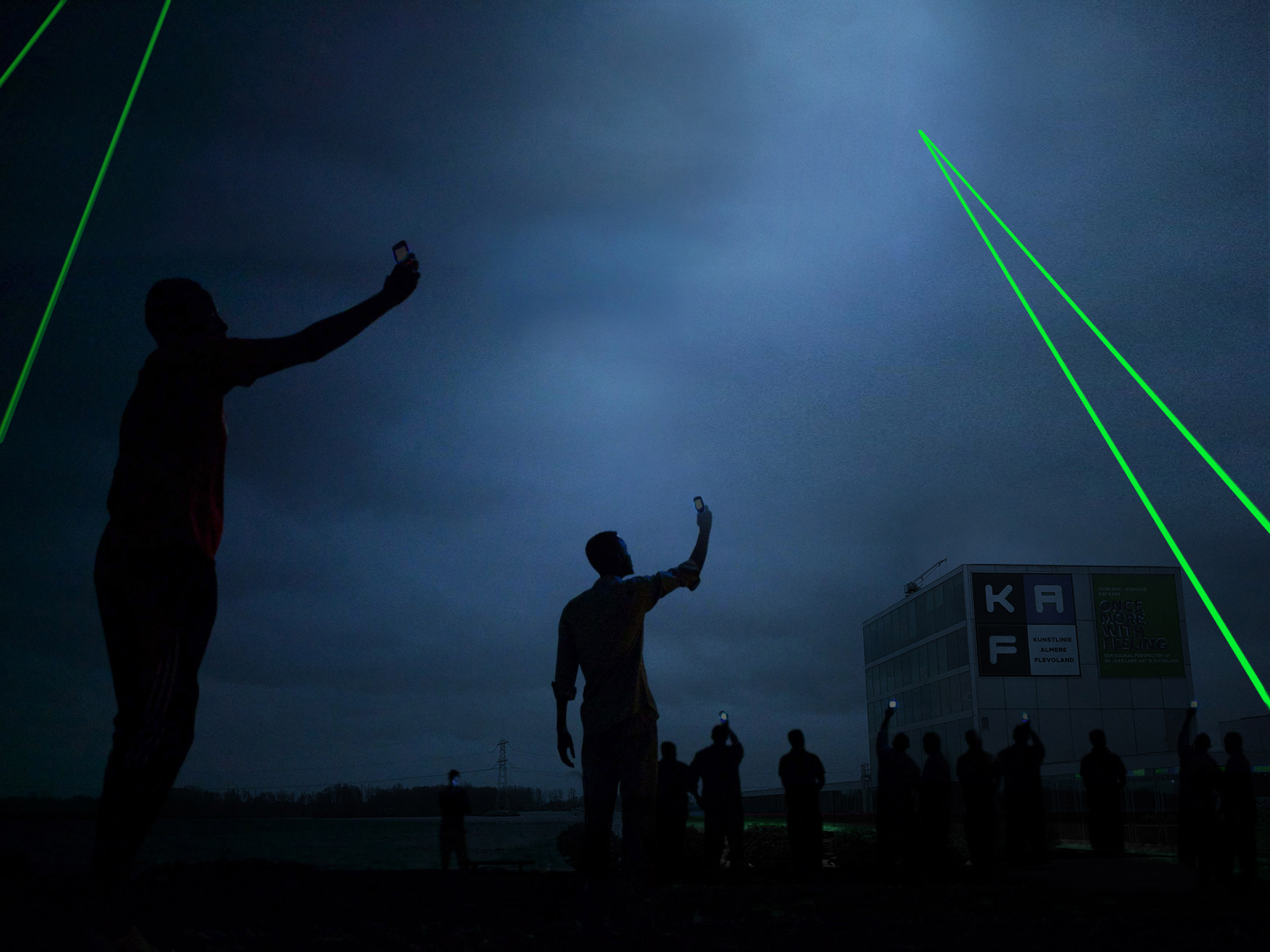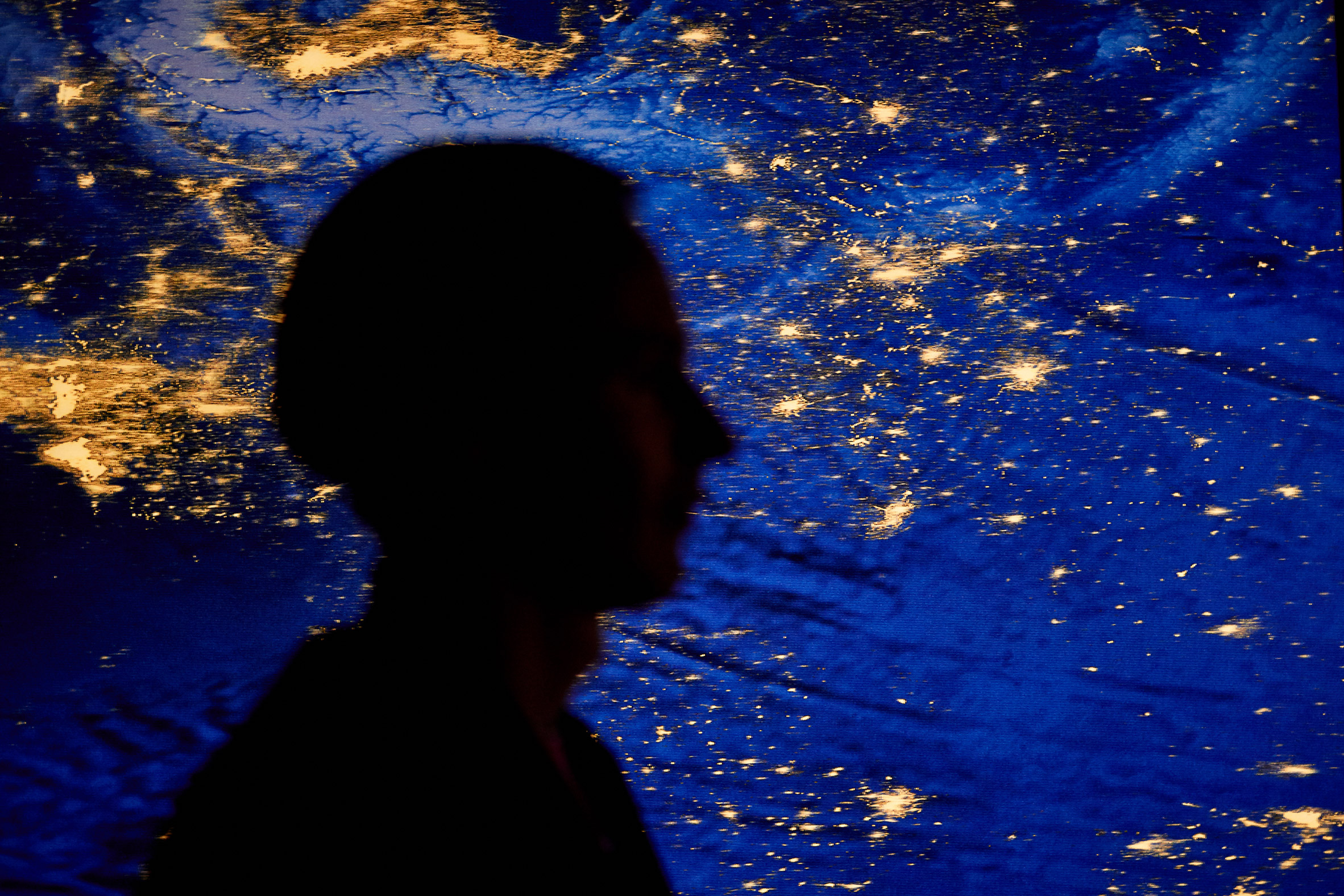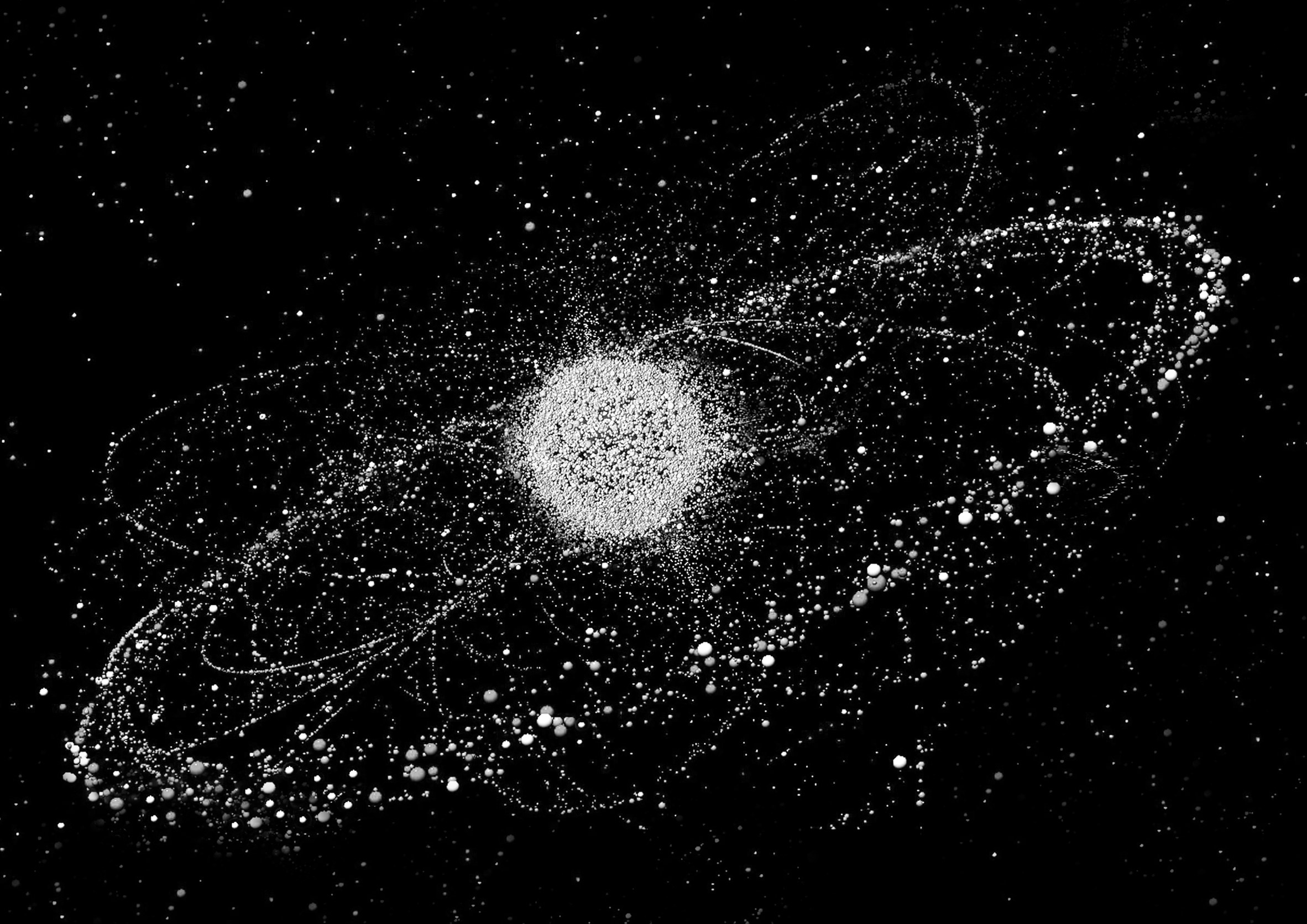Daan Roosegaarde launches initiative to turn space waste into "ingredients for something special"
September 12, 2018Dutch designer Daan Roosegaarde is launching a large-scale project to solve the "problem with no solution" of waste and debris floating around in outer space.
Roosegaarde's Space Waste Lab will use live installations and collaborative workshops to explore the various ways that floating space junk could be upcycled into useful and sustainable products.
According to Roosegaarde, there are currently more than 29,000 detectable objects larger than 10 centimetres floating around the earth. This space waste consists of waste parts and debris from rockets and satellites.
Space waste could be a source of creativity
The Smog Free Tower designer believes that the design world can suggest new ways of looking at the unsolved issue of space waste that scientists are currently facing, perhaps by turning it into artificial falling stars or 3D-printed houses on the moon.
He hopes that the project will encourage people to view space waste not merely as a threat, but also as a potential source for new creativity.

"What is interesting is that it seems to be a problem with no solution," Roosegaarde told Dezeen. "Space X, NASA, European Space Agency (ESA) – everybody in the space industry knows about it, but no solutions have been proven yet."
"I think design can add a new perspective," he continued. "Maybe it's not waste, maybe it's an ingredient for something special."
Beams of light will be used to point out space waste
Officially launching on 5 October 2018 in Almere, a city in the Netherlands, the Space Waste Lab will be structured in two phases.
Phase one will see the studio present a large-scale light installation used to visualise and bring attention to the presence of space waste above our heads.
Huge beams of light will be projected into the sky to a distance of 125 to 136,000 miles to track specific pieces of space waste.
"You really see that at that moment there is an actual piece of space junk above your head," said Roosegaarde. "And that's pretty intense, when you realise 'Wow it's out there'."
Workshops, which Roosegaarde calls living labs, will also be held, where both experts and amateurs can search for plausible solutions, investigating how the waste could be harnessed and used to create sustainable products.
Roosegaarde aiming for results by 2020
Supported by experts from ESA and NASA, the living labs will be held at Kunstlinie Almere Flevoland, a cultural centre in the city.
"For me space waste is such an obscene beauty – it's incredibly intriguing but it's also incredibly sad," said the designer. "We are not satisfied with just polluting earth, so we keep on going outside our earth's atmosphere into space."
"Phase one is really a call to action," he continued. "To think about the issue, to fix it, and to do something special with it – it's exciting!"

The results of the three-month Space Waste Lab will be announced on 19 January 2019 during a symposium at Lake Garda in Italy.
This will mark the end of phase one, and the beginning of phase two – when the designer hopes to start putting these ideas into action, aiming to have results as soon as 2020.
While 29,000 pieces of space waste have been detected, there could be as many as 600,000 pieces of junk orbiting in outer space, but the pieces that are smaller than 10 centimetres cannot currently be detected.
Given that space waste can travel at speeds of around 25,000 kilometres per hour, if even a minuscule particle was to hit an existing satellite it could break through the protective Kevlar (strong, heat-resistant synthetic fibre) layer and damage the object.

These collisions in turn create more space debris, disturbing our digital communications on earth. "This means no more Facebook, no more banking, and no more Dezeen.com!" said the designer.
As he explains, if things continue then a layer of junk will eventually form around the earth, and will prevent us from launching new missiles or rockets into outer space.
"We are essentially trapped by this layer of junk around our planet, so we cannot explore anymore," he said. "I don’t want to live in a world where pollution is normal."
Previously, the designer has concentrated his efforts on tacking pollution with his Smog Free Towers. Placed in popular areas of city centres, the structures are designed to create a pocket of clean air in its vicinity, offering a respite from hazardous levels of pollution.
Described as the "smog of our universe", space waste is Roosegaarde's latest project. The designer and his team of experts have already proposed ideas such as using the waste to create artificial falling stars as a replacement for fireworks at large-scale events such as the Olympics.
They have also proposed that the debris could be used for materials to 3D-print houses on the moon or mars, or that parts could be controlled and collided to harvest energy from them.
These theories, however, are still very speculative. The designer hopes that his Space Waste Lab will generate more of these types of ideas that can then be developed and put into action.
The post Daan Roosegaarde launches initiative to turn space waste into "ingredients for something special" appeared first on Dezeen.
from Dezeen https://ift.tt/2Mr6jst
via IFTTT
0 comments